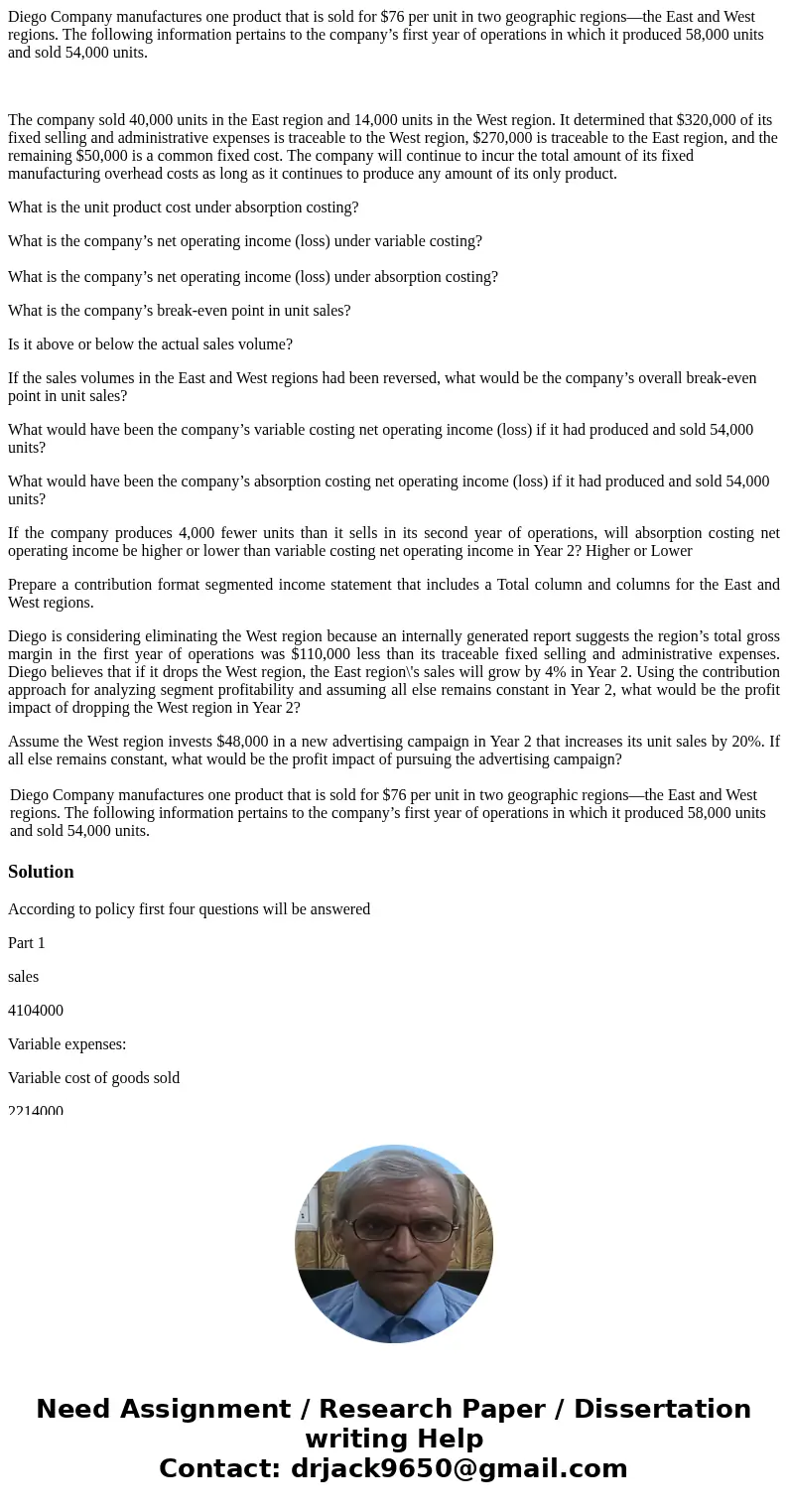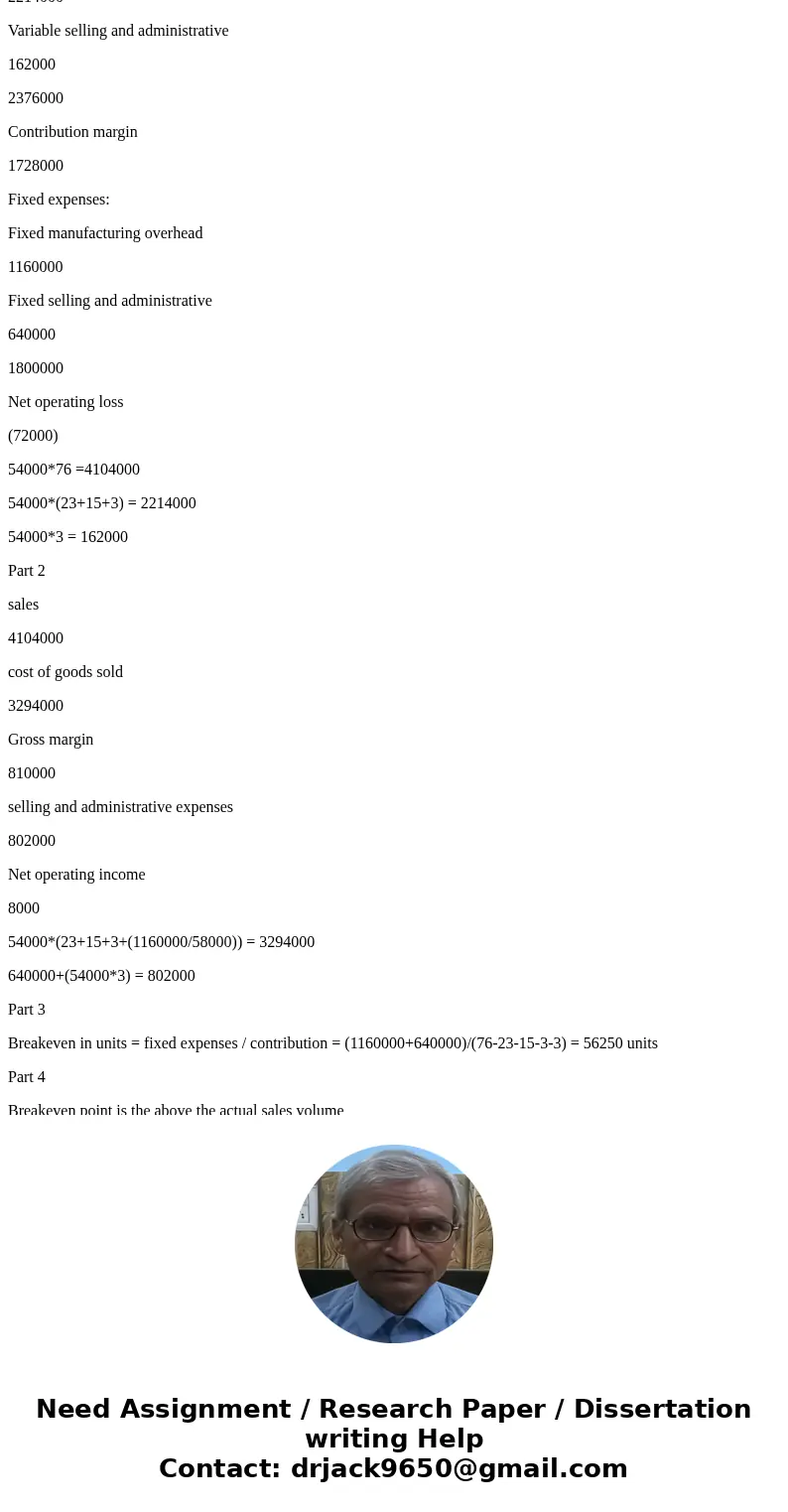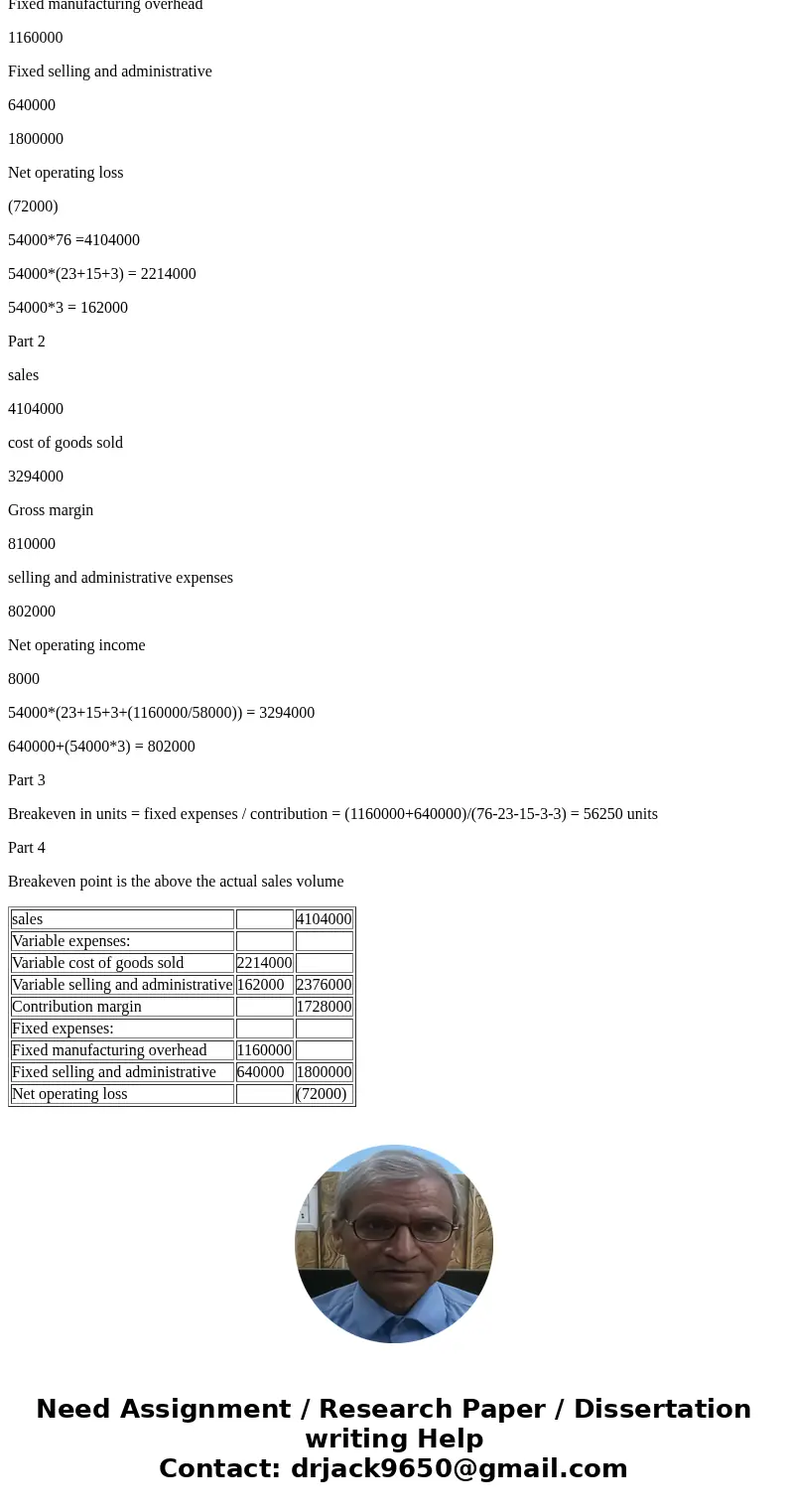Diego Company manufactures one product that is sold for 76 p
Diego Company manufactures one product that is sold for $76 per unit in two geographic regions—the East and West regions. The following information pertains to the company’s first year of operations in which it produced 58,000 units and sold 54,000 units.
The company sold 40,000 units in the East region and 14,000 units in the West region. It determined that $320,000 of its fixed selling and administrative expenses is traceable to the West region, $270,000 is traceable to the East region, and the remaining $50,000 is a common fixed cost. The company will continue to incur the total amount of its fixed manufacturing overhead costs as long as it continues to produce any amount of its only product.
What is the unit product cost under absorption costing?
What is the company’s net operating income (loss) under variable costing?
What is the company’s net operating income (loss) under absorption costing?
What is the company’s break-even point in unit sales?
Is it above or below the actual sales volume?
If the sales volumes in the East and West regions had been reversed, what would be the company’s overall break-even point in unit sales?
What would have been the company’s variable costing net operating income (loss) if it had produced and sold 54,000 units?
What would have been the company’s absorption costing net operating income (loss) if it had produced and sold 54,000 units?
If the company produces 4,000 fewer units than it sells in its second year of operations, will absorption costing net operating income be higher or lower than variable costing net operating income in Year 2? Higher or Lower
Prepare a contribution format segmented income statement that includes a Total column and columns for the East and West regions.
Diego is considering eliminating the West region because an internally generated report suggests the region’s total gross margin in the first year of operations was $110,000 less than its traceable fixed selling and administrative expenses. Diego believes that if it drops the West region, the East region\'s sales will grow by 4% in Year 2. Using the contribution approach for analyzing segment profitability and assuming all else remains constant in Year 2, what would be the profit impact of dropping the West region in Year 2?
Assume the West region invests $48,000 in a new advertising campaign in Year 2 that increases its unit sales by 20%. If all else remains constant, what would be the profit impact of pursuing the advertising campaign?
| Diego Company manufactures one product that is sold for $76 per unit in two geographic regions—the East and West regions. The following information pertains to the company’s first year of operations in which it produced 58,000 units and sold 54,000 units. |
Solution
According to policy first four questions will be answered
Part 1
sales
4104000
Variable expenses:
Variable cost of goods sold
2214000
Variable selling and administrative
162000
2376000
Contribution margin
1728000
Fixed expenses:
Fixed manufacturing overhead
1160000
Fixed selling and administrative
640000
1800000
Net operating loss
(72000)
54000*76 =4104000
54000*(23+15+3) = 2214000
54000*3 = 162000
Part 2
sales
4104000
cost of goods sold
3294000
Gross margin
810000
selling and administrative expenses
802000
Net operating income
8000
54000*(23+15+3+(1160000/58000)) = 3294000
640000+(54000*3) = 802000
Part 3
Breakeven in units = fixed expenses / contribution = (1160000+640000)/(76-23-15-3-3) = 56250 units
Part 4
Breakeven point is the above the actual sales volume
| sales | 4104000 | |
| Variable expenses: | ||
| Variable cost of goods sold | 2214000 | |
| Variable selling and administrative | 162000 | 2376000 |
| Contribution margin | 1728000 | |
| Fixed expenses: | ||
| Fixed manufacturing overhead | 1160000 | |
| Fixed selling and administrative | 640000 | 1800000 |
| Net operating loss | (72000) |



 Homework Sourse
Homework Sourse